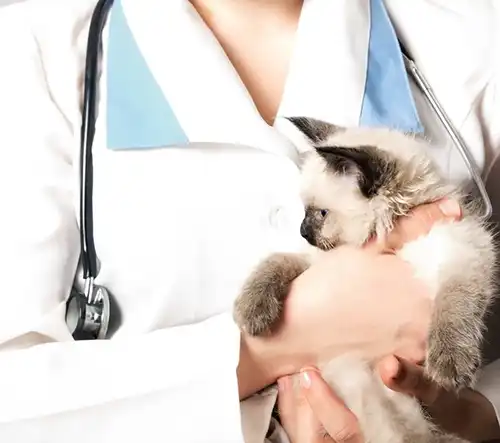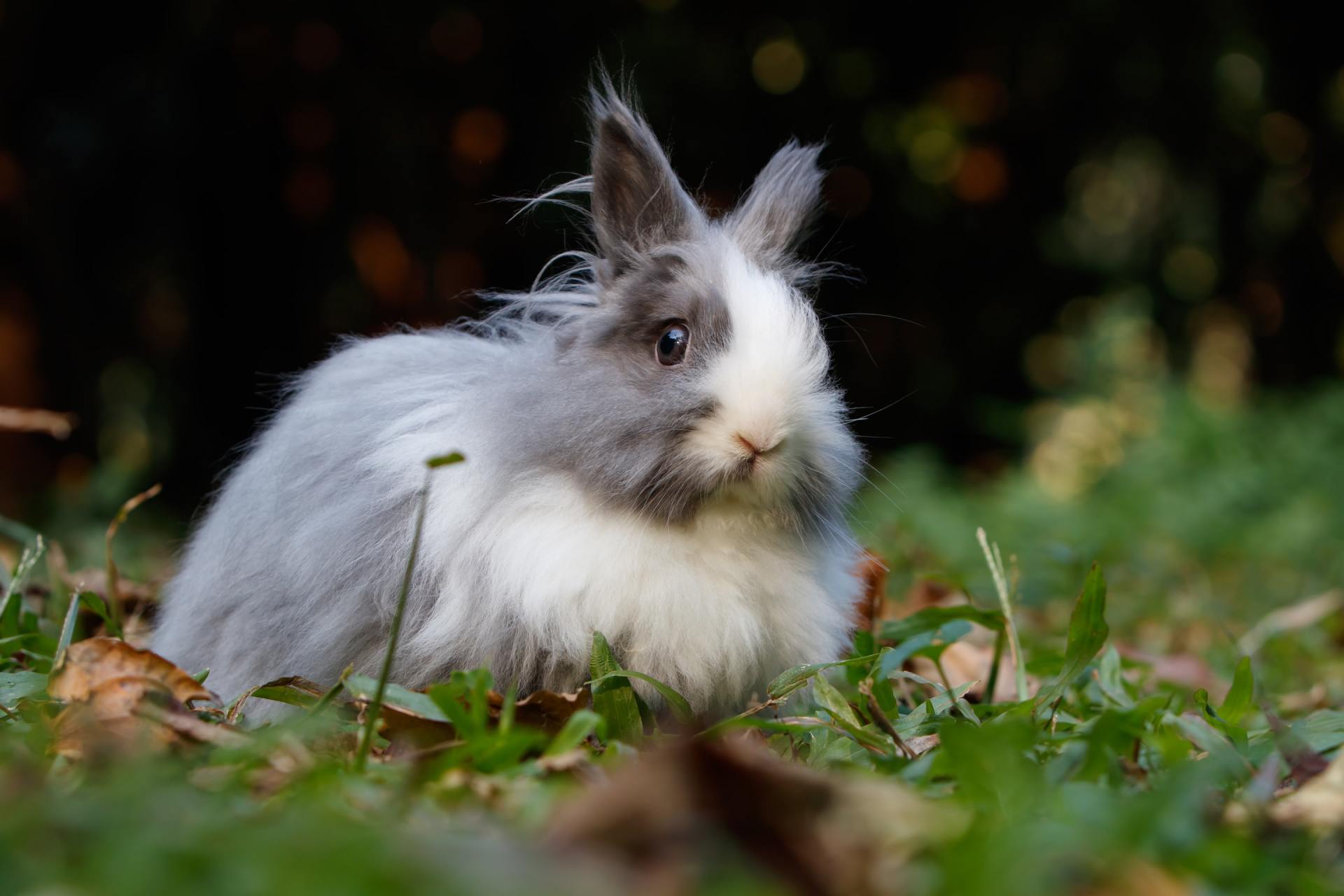Kitties are undoubtedly mysterious. We’ve known Fluffy for a long time, possibly 12,000 years. While we’ve learned a lot about our feline companions, there are a few things we may never fully understand, such as why they are obsessed with boxes, why they make clicking noises when they see birds, and why they are always so exhausted. One thing we do know is that these adorable little balls of fur tend to be rather secretive about their illness. You may have to pay close attention to your feline pal to realize that she is sick! A local veterinarian in Southwest Las Vegas, NV answers some common questions about this topic below.
How Do Kitties Act When They’re Sick?
Our feline friends are all unique. (Actually, that’s an understatement.) Every cat is a bit unique. Pay attention to any behavior that is unusual for your cat. For example, it may be entirely normal for a shy cat to hide a lot. Fluffy may also hightail it to her favorite hiding spot if someone brings a dog over or if you drop a kitchen pan. However, if your feline companion is generally pleasant and outgoing but suddenly becomes withdrawn and won’t leave the closet, there may be an issue.
Here are some more instances:
- A noisy cat that abruptly ceases meowing.
- A quiet cat that starts yowling.
- A sweet cat being grumpy/aggressive.
- A cranky kitty demanding cuddles.
The more you get to know Fluffy, the easier it will be to recognize these changes. Give your kitty plenty of attention!
What Are Some Common Feline Illnesses?
Our feline pals are usually fairly hardy, but they are not as invincible as they appear to think. Fluffy is actually susceptible to a variety of illnesses and diseases.
Here are some of the common ones:
- Diabetes
- Kidney Disease
- Hyperthyroidism
- Tapeworms
- Fleas
- FeLV
- Respiratory Issues
- Cancer
- Obesity
- Ringworm
- Dental Disease
- Intestinal Parasites
- Lymphoma
- Pancreatitis
- Urinary Infections
- Eye Problems
- Feline Infectious Peritonitis
- Heartworm
- Abscesses
- Gastrointestinal Troubles
Keeping up with your cat’s preventative and wellness care can protect her from a variety of ailments. Some issues are not really preventable, but may be treated. Of course, the faster a problem is identified and diagnosed, the better.
Why Do Cats Hide Sickness Symptoms?
As you may be aware, our feline companions can be a bit tricky here. They frequently disguise signs of illness. This is actually a deeply rooted survival instinct. Predators are always on the lookout for animals that appear weak or unwell, as they make easy targets. Fluffy discovered long ago that displaying indications of illness can draw unwanted attention from predators.
This is important to understand, because it means that your feline pal could be quite sick by the time you notice anything wrong. You also don’t want to wait to see if your pet just gets better on her own. Take your kitty to the animal clinic as soon as you realize something is amiss.
What Are Some Signs of Sickness In Kitties?
Without further ado, here are a few of the most typical things to look for:
- Changes in Vocalization or Behavior: One of the most endearing aspects of cats is their chattiness. Some of you are probably getting an earful right now! Keep an eye (or ear) out for changes in your pet’s typical vocalizations. If Fluffy is generally calm but suddenly starts meowing, she may be attempting to indicate pain. A feline who is normally highly talkative but suddenly becomes withdrawn and quiet may not be feeling well.
- Bad Breath: Fluffy’s breath is unlikely to smell minty fresh, but it should not be absolutely nasty. This can indicate tooth troubles and, in certain cases, internal disorders.
- Litterbox Troubles: Cleaning your feline companion’s litterbox will never be the most enjoyable aspect of cat ownership, but it is important. Pay close attention to what you find in Fluffy’s powder room. Changes in the color, texture, odor, or quantity of your cat’s excrement can all indicate health problems. If you notice your cat straining to go, call your vet right away: this could be an indication of obstructions, which are quite deadly.
- Weight Changes: Our feline companions are relatively little, so even a pound or two increase or loss can indicate serious health difficulties. Pay close attention to your pet’s weight!
- Vomiting: Fluffy throwing up on occasion is usually not a cause for concern. Many of our feline companions experience the occasional hairball. However, regular vomiting is a major problem. Dry heaving, bloody or frothy vomit, and any other form of atypical vomiting are also problematic.
- Reduced Appetite: Kitties can be picky, but if Fluffy just doesn’t like what you put in her bowl, she should meow to request something new. A total lack of interest in food is a red indicator.
- Increased Appetite: On the other hand, A sudden increase in hunger can be concerning. Our feline friends are usually rather excited about eating, but if your feline buddy suddenly appears to be a bottomless pit, there could be an underlying condition, such as hyperthyroidism.
- Diarrhea: Diarrhea is one of the few warning signals that almost all of our animal friends, regardless of age, exhibit. This can indicate a number of disorders, including parasites, inflammation, and other difficulties. It can also swiftly result in dehydration. Constipation is also an issue, but it may be hard to detect, especially if your pet’s litterbox is in a private area.
- Lethargy: While some cats appear to consider lethargy their main life goal, even the sleepiest kitty should be attentive and awake at least a few times every day. If Fluffy is completely out of energy, there could be a problem.
- Increased Thirst: Excessive thirst can be a sign of a variety of conditions, including diabetes and kidney disease. Fluffy must constantly have fresh water. Keep an eye on how much she’s drinking. Filling her bowls at consistent intervals each day can assist with this.
- Respiratory Issues: Gasping, coughing, wheezing, fast breathing, shortness of breath, and harsh breathing are all red indicators. These may necessitate emergency treatment, especially if the problem develops quickly.
- Discharge: The odd eye ‘booger’ is normally not a problem, but excessive, goopy, or discolored discharge from the eyes is. A runny nose is also unusual in cats and may indicate respiratory problems. Discharge from the ears is another cause for concern.
- Skin/Coat Issues: It’s fairly uncommon for senior cats to appear disheveled. Senior pets frequently struggle with grooming themselves because they become stiff and uncomfortable over time. However, most cats do a decent job of keeping up with their beauty regimes. If your kitty’s fur appears dull, or if you notice redness, flaking, sores, or bald spots, call your Southwest Las Vegas, NV veterinarian immediately.
Visible Signs Of Trauma are also a sign that your pet needs immediate care, as are known or suspected injuries or poisonings. Limping, fever, cuts, sores, and swelling are just a few of the symptoms that should be treated right away.
If you observe any of these warning signs or any other indication that your cat isn’t feeling well, please contact us, your Southwest Las Vegas, NV pet hospital, right away.
Visit Our Southwest Las Vegas, NV Pet Hospital
Do you have any questions about your cat’s health or care? Please contact us at your local Southwest Las Vegas, NV pet hospital at any time. We are dedicated to providing exceptional treatment.






!Social Media Icons